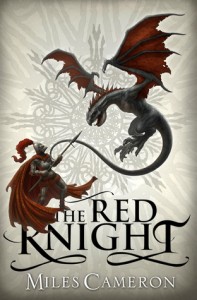
Much of the book’s richness lies in the banter between the two old friends (there’s only one place it falls flat, and it says something about the quality of the texture elsewhere that the flat spot drives me a little nuts every time I read it), who are both skilled and eccentric wizards. The friendship is a longtime one, built of mutual affection, exasperation, and shared experience. Pieces of this book are a buddy roadtrip, taken through a series of small kingdoms, some only town-sized, and the supernatural menace is one that is genuinely haunting.
I’ve read other books by Bellairs, but with the exception of The House with a Clock in its Walls (which has lovely Edmund Gorey illustrations as a bonus), I find that his children’s literature falls flat for me, though I know it’s well-loved by many middle-graders. For me, it lacks the menace that both Face in the Frost and Clock in Its Walls hold.
I used part of the first paragraph for the description of Prospero’s house for our clan housing on Dark Castle MUD, (back in the innocent days of the early Net when the majority of us had no idea what copyright meant); for all I know (and hope) it’s still there, but I somehow doubt it. Here it is, for your delectation:
Several centuries (or so) ago, in a country whose name doesn’t matter, there wa a tall, skinny, straggly-bearded old wizard named Prospero, and not the one you are thinking of, either. He lived in a huge, ridiculous, doodad-covered, trash-filled two-story horror of a house that stumbled, staggered, and dribbled right up to the edge of a great shadowy forest of elms and oaks and maples. It was a house whose gutter spouts were worked in the shape of whistling sphinxes and screaming bearded faces; a house whose white wooden porch was decorated with carved bears, monkeys, toads, and fat women in togas holding sheaves of grain; a house whose steep gray-slate roof was capped with a glass-enclosed, twisty-copper-columned observatory. On the artichoke dome of the observatory was a weather-vane shaped like a dancing hippopotamus; as the wind changed, it blew through the nostril’s of the hippo’s hollow head, making a whiny snarfling sound that fortunately could not be heard unless you were up on the roof fixing slates.






